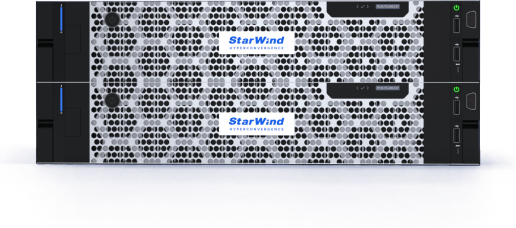Have you ever wondered how systems efficiently manage resources when dealing with multiple processes or virtual machines? One clever technique is Copy-on-Write (CoW). This article will walk you through everything you need to know about CoW: what it is, how it works, its benefits, challenges, and where it’s used. By the end, you’ll have a solid understanding of how CoW optimizes resource management and enhances system performance.
What Is Copy-on-Write (CoW)?
Let’s start with the basics. Copy-on-Write (CoW) is a resource management technique used primarily in operating systems and storage systems. The main idea behind CoW is to postpone or completely avoid copying data until it’s absolutely necessary. Instead of immediately duplicating data, CoW allows multiple processes to share the same data pages. When one of the processes needs to modify the data, only then a copy of that specific data page is created. This approach significantly reduces resource consumption and improves efficiency.
How copy-on-write works
Now, let’s dive into the mechanics of how Copy-on-Write actually works. The process involves a few key steps, primarily centered around data copying and page sharing. Understanding these steps can give you a clearer picture of why CoW is so effective.
Data copying mechanism
The data copying mechanism in CoW is designed to be as efficient as possible. When a process attempts to write to a memory page that is shared with other processes, the system intercepts this write operation. Instead of directly modifying the shared page, the system first creates a new copy of that page. The writing process then modifies this new copy, while the original page remains unchanged and accessible to other processes. This ensures data integrity and prevents unintended modifications. The copied page is then mapped into the address space of the writing process, allowing it to proceed with its operation without affecting others.
Page sharing process
Page sharing is a fundamental aspect of CoW. When multiple processes start, instead of each process getting its own copy of the data, they all initially point to the same physical memory pages. These pages are marked as read-only. If a process tries to modify a page, a “page fault” occurs. This fault triggers the CoW mechanism, which then creates a private copy of the page for the process that wants to write to it. All other processes continue to use the original, shared page. This approach maximizes memory utilization and reduces the amount of physical memory required.
To illustrate, consider two processes, A and B, both using the same library. Initially, they both point to the same physical memory. If process A wants to modify a part of the library, here’s what happens:
- Process A attempts to write to a shared memory page.
- A page fault is triggered, indicating a write attempt on a read-only page.
- The CoW mechanism intercepts the fault.
- A new copy of the page is created.
- Process A’s page table is updated to point to the new copy, which is now writable.
- Process A proceeds with its write operation on the new copy, while process B continues to use the original page.
Illustrations of CoW in action
Let’s look at a practical example. Imagine you’re using a virtual machine (VM). When you clone that VM using CoW, the new VM doesn’t immediately duplicate all the data from the original. Instead, it shares the same underlying disk image. Only when the new VM starts making changes does CoW create new blocks for the modified data. This significantly speeds up the cloning process and conserves disk space.
Another common use case is in database management systems. When you create a snapshot of a database, CoW ensures that you’re not duplicating the entire database. Instead, the snapshot shares the same data blocks as the original database. As changes are made to either the original database or the snapshot, only the modified blocks are copied. This makes snapshot creation and restoration much faster and more efficient.
Benefits of Copy-on-Write
- Efficient Memory and Storage Usage: By delaying data copying until necessary, CoW reduces the amount of memory and storage required, especially beneficial in environments with numerous processes or virtual machines.
- Rapid Snapshot Creation: CoW enables quick creation of snapshots in file systems and storage solutions. Since data isn’t duplicated immediately, snapshots can be created swiftly, conserving storage space.
- Effective in Multi-Tenant Environments: In containerized environments, CoW allows multiple containers to share the same base image. Changes made by one container don’t affect others, as modifications are stored separately.
Challenges with Copy-on-Write
- Write Performance Overhead: The initial write to shared data incurs additional operations, such as allocating new memory and updating metadata, which can introduce latency.
- Data Fragmentation: Since modifications are written to new locations, data can become fragmented over time, potentially impacting read/write performance.
Applications of Copy-on-Write
Copy-on-Write has found its place in numerous applications across different areas of computing. Let’s look at how it’s used in operating systems, virtualization, and other notable applications.
Operating systems
Modern operating systems extensively use CoW for various purposes. One common application is in process creation using the fork() system call in Unix-like systems. When a process forks, the operating system uses CoW to share memory pages between the parent and child processes. This significantly speeds up the forking process and reduces memory consumption. Another use case is in memory mapping, where CoW allows multiple processes to share the same file in memory without duplicating the data. This is particularly useful for shared libraries and other read-only data. By leveraging CoW, operating systems can achieve better performance and resource utilization.
Virtualization
In virtualization, CoW is a key technology for creating efficient virtual machine clones and snapshots. When you clone a VM using CoW, the new VM initially shares the same underlying disk image as the original. Only when the new VM starts making changes does CoW create new blocks for the modified data. This significantly reduces the time and storage space required for cloning. Similarly, CoW is used for creating snapshots of VMs, allowing you to quickly revert to a previous state without duplicating the entire disk image. This makes CoW an essential component of modern virtualization platforms, enabling faster provisioning and better resource management.
CoW in File Systems
- ZFS: This advanced file system uses CoW for all writes (data and metadata). Instead of overwriting, ZFS writes changes to new blocks, preserving the original data for strong integrity, efficient snapshots, data checks, and easy rollbacks.
- ReFS: Microsoft’s ReFS uses CoW mainly for metadata updates, allocating new storage for changes to ensure file system consistency. CoW for file data is optional via integrity streams, enabling data checks and potential self-healing. ReFS also uses CoW for efficient file duplication through block cloning.
- Btrfs: This Linux file system employs CoW for all writes (data and metadata). Writing changes to new blocks allows for efficient snapshots, transparent compression, and quick rollbacks, making CoW central to its data integrity and storage management features.
Future trends and innovations in CoW technology
The future of Copy-on-Write technology looks promising, with ongoing research and development focused on further optimizing its performance and applicability. One trend is the integration of CoW with emerging storage technologies, such as NVMe and persistent memory, to reduce latency and improve throughput. Another area of innovation is the development of more sophisticated CoW algorithms that can adapt to different workloads and environments. Additionally, there is increasing interest in using CoW in distributed systems and cloud computing to enable efficient data sharing and replication. As technology continues to evolve, CoW is likely to remain a vital technique for resource management and performance optimization.
Conclusion
In summary, Copy-on-Write (CoW) is a powerful resource management technique that optimizes memory and storage usage by delaying or avoiding unnecessary data copying. We’ve explored its definition, how it works, its benefits, challenges, and diverse applications in operating systems, virtualization, and other areas. By understanding CoW, you can appreciate its importance in enhancing system performance and resource efficiency.
The impact of CoW on technology is profound. It enables faster cloning, efficient snapshots, and better overall resource utilization. As systems become more complex and data-intensive, the role of CoW will only continue to grow. Its ability to minimize redundant data copying and optimize resource management makes it an indispensable tool for modern computing.


